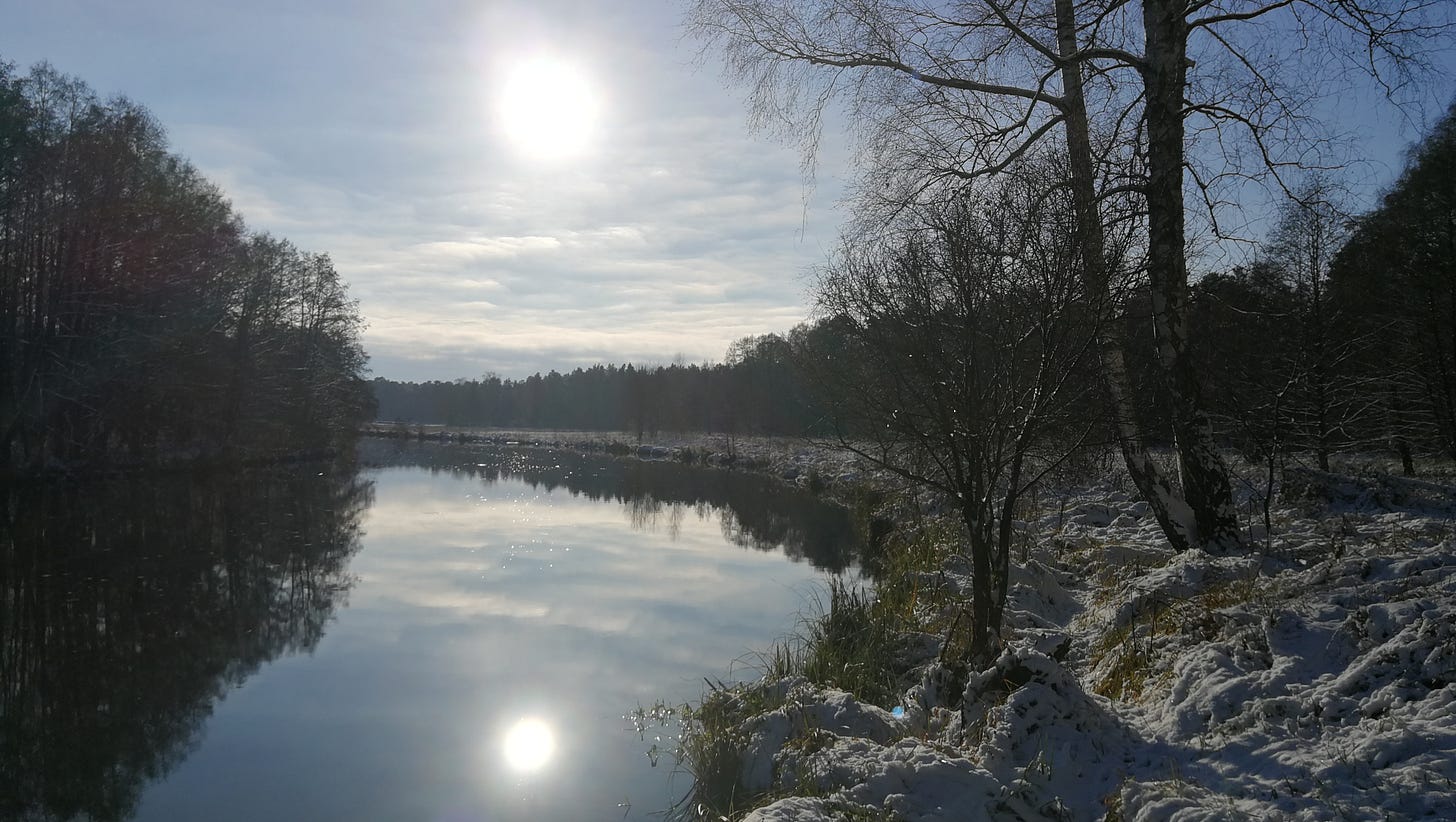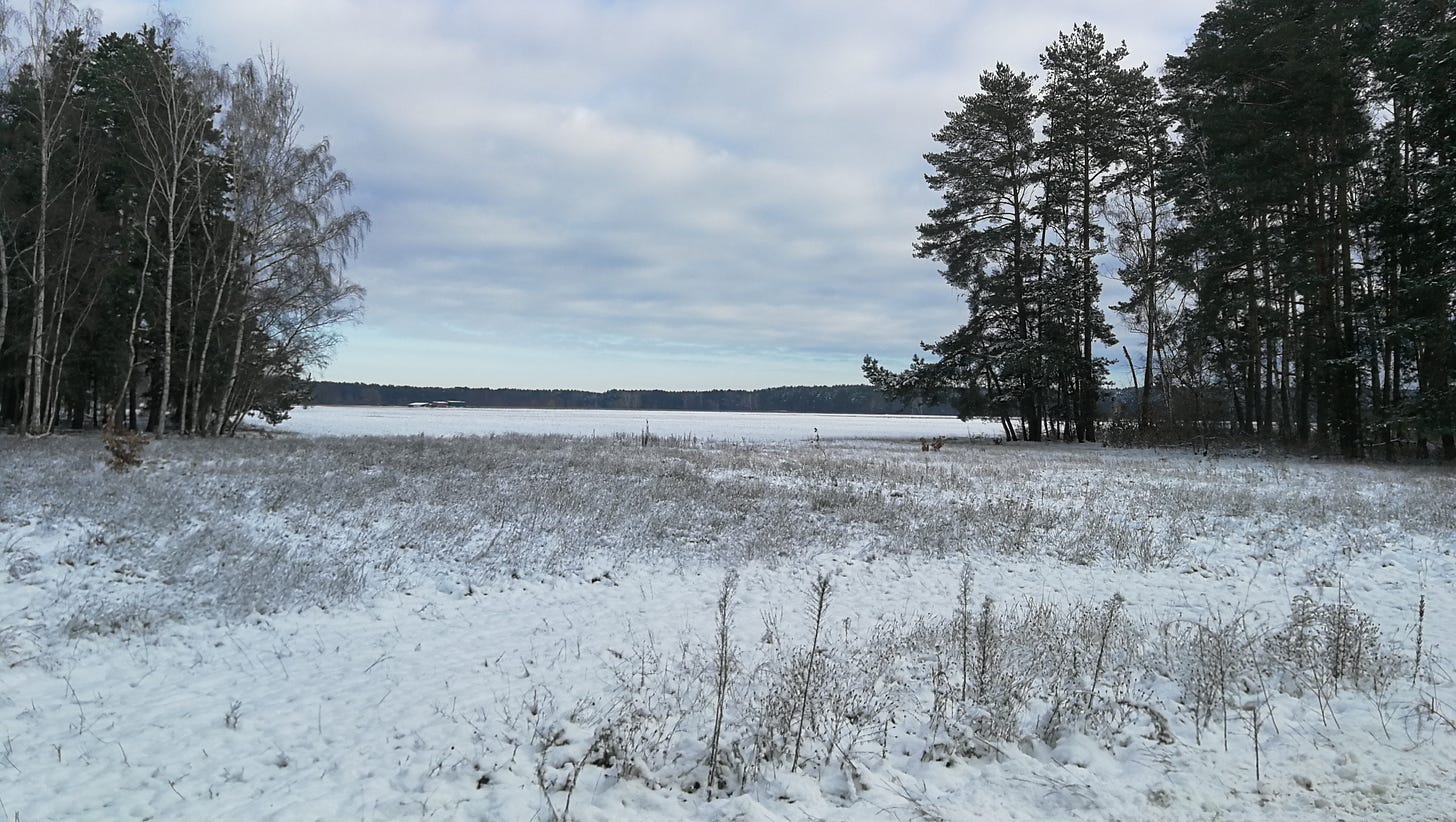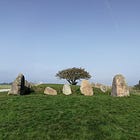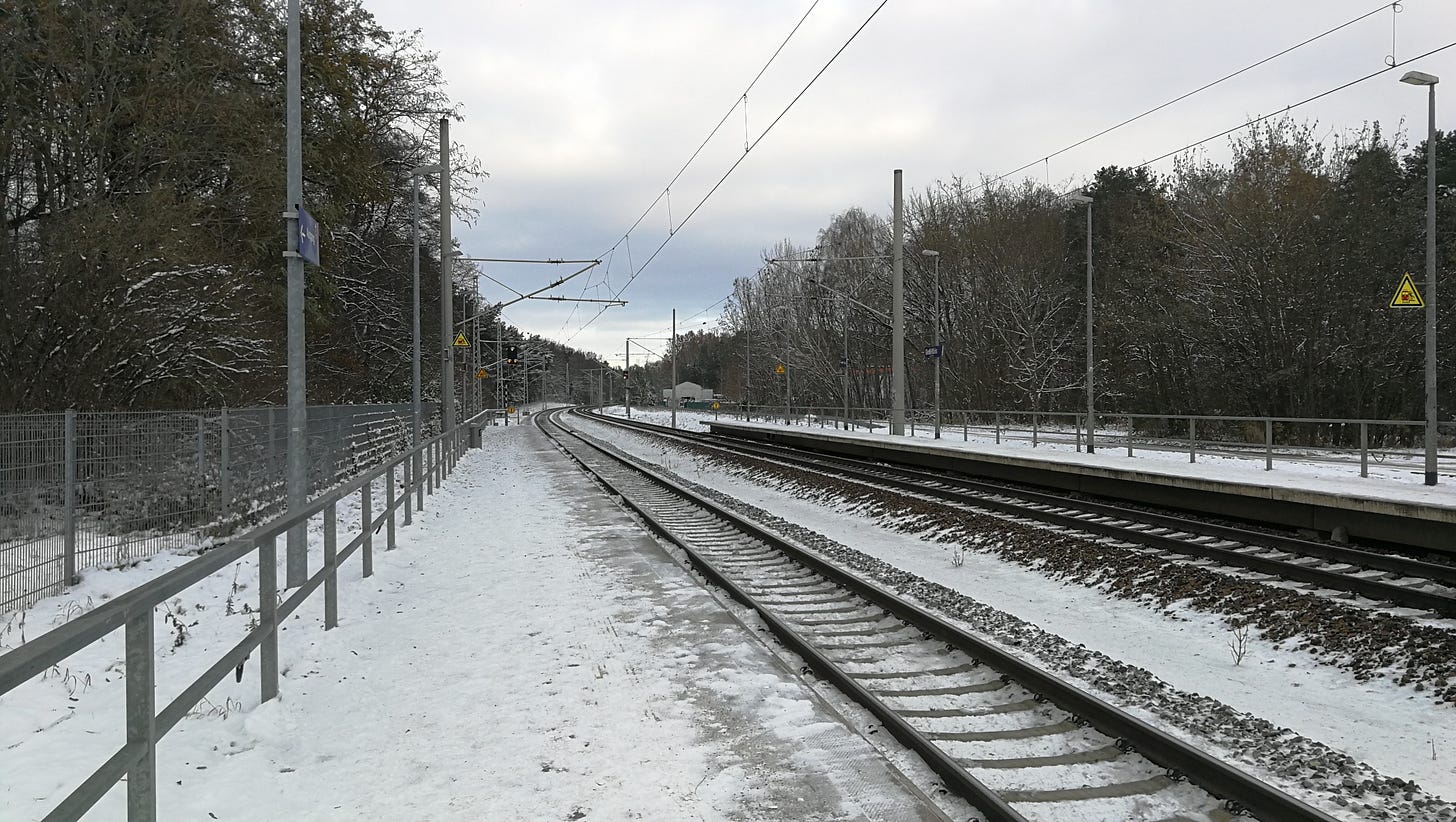Since the summer I’ve been hiking sections of the E10 around Berlin, from a point where it crosses a town with a rail stop to the next one. This has made for convenient day-hikes, while also affording me a way to complete sections of the trail making my way farther from the city, gradually working my way south. I started around Potsdam, to the east of the city, and covered about seventy kilometers between there and the small town of Groß Köris by September. After that, I had my hikes on Rügen, and then the Forststeig, so hadn’t had the opportunity for any more sections until late November.
As it turned out, the next section also didn’t have any rail stops for at least fifty kilometers, so I decided I would do the next section as a two-or-three-night hike, extending the distance and gradually getting into a rhythm of doing multi-night hikes. And as winter was fast approaching, this would also be my chance to field test my hiking gear on a solo winter hike, which I’d never done before.
Hiking in Winter
I’ve done hikes in deep winter before—in fact, this was how I started hiking, and it was for this purpose that I bought most of my original hiking gear, as I mentioned previously—but it was always either in a group, or with a partner.
So this was going to be an escalation in difficulty for me in a number of ways, mainly related to winter conditions. I’d hiked a short test-run of my layering and pack load on a trail through Berlin’s parks a couple days prior, and it turned out even just a couple light layers was more than enough to keep me warm; I ended up overheating once I got moving. Since I also wanted to test out a new camera, I shot the whole test-hike as a silent-hiking video, which you can find on Youtube:
(I should also mention that I’ve been spending the last couple months learning to use a video editor, and now that I’m reasonably competent with it I can finally start posting to my Youtube channel)
I wasn’t really worried about any of my gear holding up in the cold: my tent is an excellent Hilleberg tent that’s built for harsh conditions, and my sleeping bag claims a -20° rating. I was more worried about having enough daylight to hike from one overnight to the next, because it turns out (who would have guessed?) that most campgrounds are closed in the winter. Finding a spot where you can pitch a tent, as I’ve mentioned, sometimes requires creative route-planning.
However, I found a helpful site-warden in Märkisch Buchholz, fifteen kilometers down-trail from Groß Köris, and a restauranteur in Petkamsberg who would at least not object if I camped on his otherwise closed-for-the-season campsite. The next one after that was a large commercial campground twenty-five kilometers farther, in Lübbenau, and thence only another fifteen kilometers to the town of Burg for the bus home. All of that seemed like reasonable legs for a four-day, three-night hike. You can find the route here.
Day One
Leaving Groß Köris, I first follow a road through the forest to circle around a campground at Klein Köris, and then alongside the field I photographed near the top of this article. That was where I remembered why I hike in these conditions: the austere beauty of hiking in the winter is really breathtaking, with every part of the landscape transformed into something otherworldly.
Before long I reach the edge of the river Dahme, and from there it’s only a bit over an hour before I reach Märkisch Buchholz. The site is alongside the river, and the site-warden kindly dropped by to open up the restrooms (which are heated, so I have somewhere to store my gear until bed where I don’t have to worry about it freezing).
Here is where I run into another problem of hiking in the winter: this far north, the sun goes down around 16:00, and there’s not really anything to do after that. So I shot this lovely video of the sun setting, then made my dinner by around sunset (I made the pemmican/mashed-potato stew I usually make on the trail), and finally gave up and headed to bed around 18:30.
I can’t really sleep for twelve hours straight, and even with a good bag and insulating mattress, it’s quite cold. So I spent a lot of the night trying to warm up, or get comfortable, or get to sleep (which I only managed for short portions of the night). It turned out the thing that was most cold was my nose and throat, so I planned for future overnights to wear a facemask.
Day Two
Getting up in the dark, with the entire inside of my tent covered in frost, was quite the challenge. But once I got all my layers back on, and was moving around making breakfast, I was fine. And it turned out that my spot was really lovely in the icy mists of early morning.
I eventually did manage to get a hot coffee, and then some oatmeal, and by that point I was warmed up, so I packed up my gear and headed out for the day. This day’s hike was twenty-five kilometers to Petkamsberg, and it turned out that almost all of it was straight along farm and canal roads. This also included the one major ascent of the entire hike, gaining about eighty meters above the rest of the route.
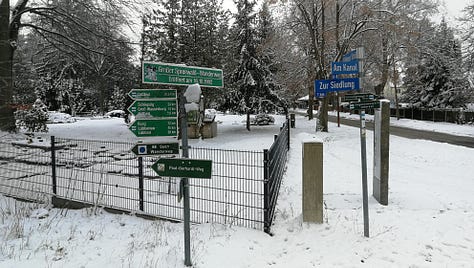
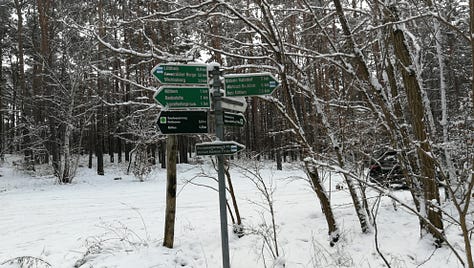
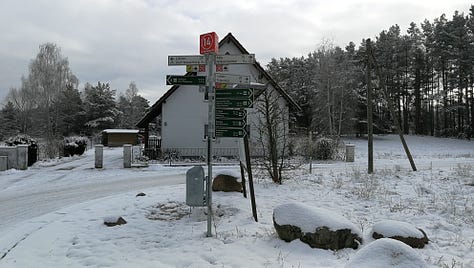
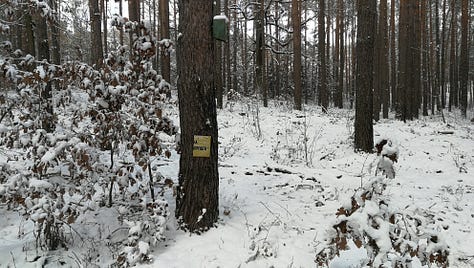


Problems
But once I came off that hill and started hiking along a flat and level canal path, this is where my problems started. On flat ground I speed up my pace, and the monotony of the terrain means me feet are striking the same way with every step, over and over for hours. Gradually, my feet swelled, increasing pressure on my pinkie toes and the top of my big toe. By the time I was just outside of the picturesque village of Schlepzig, a shooting pain had flared out around my entire toe on my right foot, intense enough to make me limp.
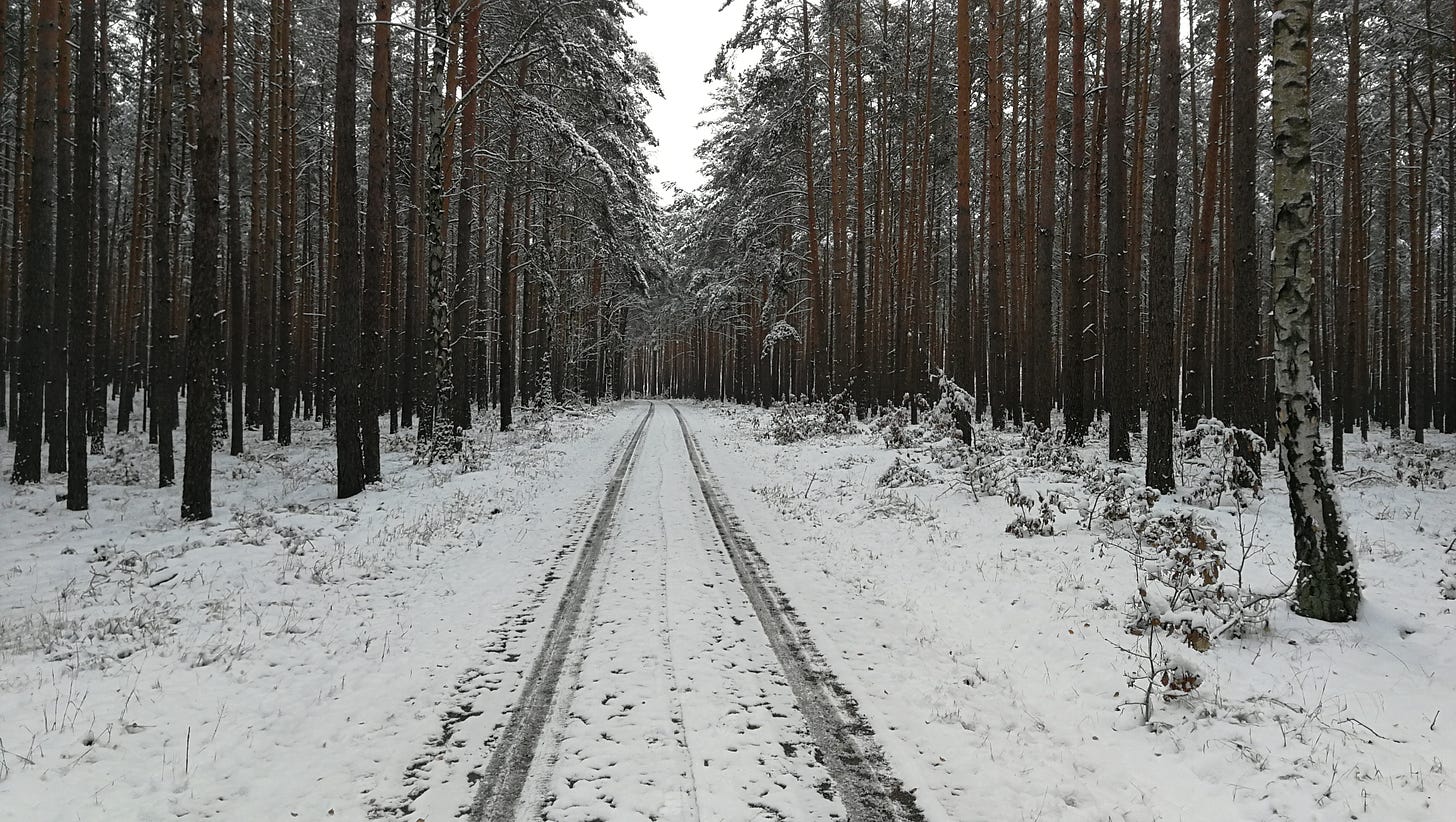
I still had four kilometers to go to Petkamsberg, and the next day was going to be another twenty-five to Lübbenau. I wasn’t sure I’d make it to my camp for the night before dark, and was almost certain I wouldn’t make it to the next camp the following day.
And so, for the second time in as many months, I’ve had to cut a hike short, though for entirely different reasons. I stopped at Schlepzig, and took the bus from there to the rail station in Lübben, and took the train back home.

This was extremely frustrating for me, as it makes me doubt my ability to undertake any longer hikes. I’m going to have to spend the winter months, while my feet are healing, figuring out my footwear so that this doesn’t happen any more. I’m fairly convinced that my boots are both too small and too narrow in the toebox, because all my blisters and injuries are occurring around the outer edges of my toes, or where my pinkie toes get rolled up under their neighbors. As I usually wear “barefoot”-style sandals, my toes are spread out into their natural shape normally, so I expect a narrow-toed boot just isn’t going to work.
But I’m determined to overcome this, however many tries it takes. The trail was beautiful, and so long as my feet were holding up I loved being out in it. This might be a setback, and a frustrating one, but this is how we learn.




